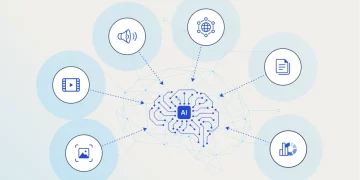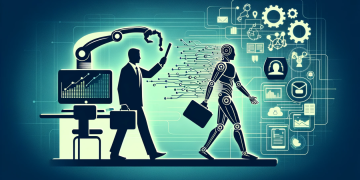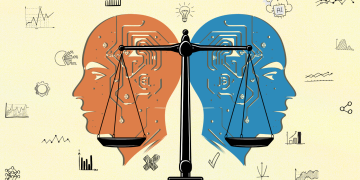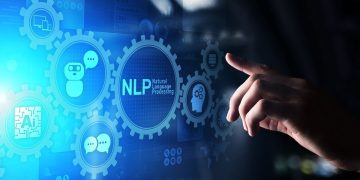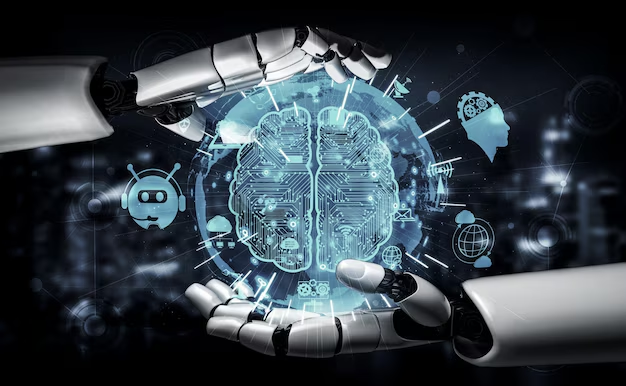Introduction:
Machine learning (ML), a subset of artificial intelligence (AI), has rapidly evolved from an academic concept to a central pillar of technological innovation, influencing nearly every facet of modern society. In recent years, the influence of machine learning technologies has transcended the boundaries of academia and tech startups, creating far-reaching implications for the global economy. From transforming industries and supply chains to reshaping labor markets and global trade, machine learning is having an undeniable impact on the world’s economic systems.
As machine learning algorithms grow increasingly sophisticated, their capacity to optimize processes, predict trends, and automate complex tasks is driving innovation and increasing efficiency across various sectors. This article explores how machine learning technologies are affecting the global economic landscape, examining their impact on businesses, industries, labor markets, economies, and societal structures.
1. Machine Learning in Business and Industry: Driving Efficiency and Innovation
Machine learning technologies are revolutionizing how businesses operate, creating new opportunities for growth, and pushing industries toward greater efficiency. By automating processes, predicting market trends, and enhancing decision-making, machine learning is allowing companies to streamline operations and reduce costs while simultaneously improving customer satisfaction.
1.1. Automation of Routine Tasks
Machine learning is being used to automate repetitive and time-consuming tasks in various industries, from manufacturing to finance. In the automotive industry, for example, machine learning algorithms optimize supply chain management, predict equipment failures, and enhance quality control processes, reducing operational costs and improving productivity. Similarly, in financial services, ML algorithms are streamlining processes such as fraud detection, risk management, and algorithmic trading.
This automation reduces the need for manual labor in routine tasks, leading to lower operational costs and faster decision-making. The result is increased efficiency, reduced errors, and higher profit margins for companies that effectively integrate machine learning into their operations.
1.2. Personalization and Customer Experience
Machine learning also plays a critical role in improving customer experiences and personalizing products and services. Retailers like Amazon and Netflix, for instance, use machine learning algorithms to analyze customer preferences, predict buying patterns, and recommend personalized content. These algorithms enhance customer satisfaction by delivering tailored recommendations and ensuring that consumers receive relevant, targeted products and services.
In industries such as healthcare, machine learning helps personalize patient care by analyzing patient data to create individualized treatment plans. This level of personalization not only improves patient outcomes but also increases operational efficiency by ensuring that resources are allocated effectively.
1.3. Predictive Analytics and Decision-Making
Machine learning’s predictive capabilities are transforming how businesses make decisions. From demand forecasting in retail to predictive maintenance in manufacturing, machine learning algorithms are able to analyze vast amounts of data to predict trends and potential issues before they occur. This enables businesses to make proactive decisions, minimize risks, and optimize resource allocation.
For example, supply chain companies use ML algorithms to predict inventory needs, reducing excess stock and minimizing the risk of shortages. In finance, machine learning models are used to predict market fluctuations and manage investment portfolios, allowing firms to stay ahead of market trends.
2. Machine Learning in Global Trade: Accelerating Growth and Efficiency
The integration of machine learning into global trade systems is transforming international commerce by enhancing logistics, optimizing supply chains, and improving trade forecasting. ML technologies are enabling businesses and governments to streamline cross-border trade processes, improve the efficiency of ports and transportation networks, and predict demand fluctuations in real-time.
2.1. Optimizing Supply Chain Management
Machine learning algorithms are improving supply chain management by providing companies with enhanced visibility and control over their supply networks. By analyzing data from various sources—including production schedules, transportation routes, and weather patterns—ML systems can predict delays, optimize shipping routes, and ensure timely deliveries.
This level of optimization has major economic implications. It reduces transportation costs, minimizes stockouts, and increases the reliability of global supply chains. In turn, companies can offer more competitive prices, boost customer satisfaction, and expand their market reach, resulting in increased global trade and economic growth.
2.2. Trade Forecasting and Market Intelligence
Machine learning is also transforming how businesses and governments predict global market trends. By analyzing large datasets of historical trade data, ML algorithms can predict shifts in consumer demand, commodity prices, and geopolitical developments that affect international trade. This improved market intelligence enables businesses to make data-driven decisions about sourcing, pricing, and inventory management.
Governments and trade organizations are also using machine learning to forecast trade patterns, track the flow of goods across borders, and identify emerging markets. These insights help policymakers create more effective trade policies and regulations that foster global economic growth.
3. Impact of Machine Learning on Labor Markets: Job Creation and Displacement
As machine learning technologies automate tasks and optimize business operations, they are having profound effects on labor markets around the world. While automation presents opportunities for increased productivity and new job creation, it also raises concerns about job displacement, income inequality, and the future of work.
3.1. Job Creation in Tech and Data-Driven Sectors
Despite concerns about automation replacing human labor, machine learning has also created numerous job opportunities in fields related to data science, artificial intelligence, and software development. As companies continue to adopt AI and machine learning technologies, there is an increasing demand for skilled professionals who can design, implement, and maintain these systems.
In sectors like healthcare, finance, and manufacturing, businesses are hiring data scientists, ML engineers, and AI specialists to develop custom solutions and integrate ML algorithms into their operations. Moreover, as machine learning continues to expand into new industries, the demand for skilled workers is expected to grow significantly in the coming years.
3.2. Job Displacement and Automation Anxiety
On the other hand, the rise of automation and machine learning technologies is contributing to job displacement, particularly in industries that rely on manual labor or routine tasks. Manufacturing jobs, customer service positions, and even some administrative roles are increasingly being automated by machine learning algorithms, raising concerns about unemployment and the displacement of workers without the necessary skills to transition to new roles.
While some argue that new job opportunities will emerge as a result of automation, others worry that the pace of change may outstrip the ability of workers to retrain and adapt to new roles, exacerbating income inequality and social unrest. Governments and businesses will need to invest in reskilling programs to ensure that workers are prepared for the demands of the digital economy.

4. Machine Learning and Economic Growth: Enhancing Productivity and Innovation
The ability of machine learning to increase efficiency, reduce costs, and drive innovation is contributing to overall economic growth. As more companies adopt ML technologies, productivity levels across various sectors are rising, leading to increased output and wealth generation.
4.1. Boosting Global Productivity
Machine learning is one of the key drivers of global productivity growth. By automating processes, enhancing decision-making, and enabling more efficient resource management, machine learning is helping businesses achieve higher levels of output with fewer resources. This productivity boost is translating into higher GDP growth in countries that embrace digital transformation and AI technologies.
For example, the widespread use of machine learning in industries such as agriculture, manufacturing, and logistics is improving yield rates, reducing waste, and lowering production costs. This allows businesses to produce more goods and services at a lower cost, stimulating economic growth.
4.2. Fostering Innovation and Entrepreneurship
Machine learning is also spurring innovation and entrepreneurship, creating new markets and opportunities for start-ups. In the tech sector, countless start-ups are leveraging machine learning to develop novel solutions in areas such as healthcare, finance, transportation, and energy. By providing more efficient, data-driven services, these companies are disrupting traditional industries and challenging established players.
The innovation fostered by machine learning is leading to the creation of entirely new business models and industries, which further contributes to economic dynamism. In turn, this drives competition, encourages investment, and fuels the continued expansion of the global economy.
5. The Global Economic Implications of Machine Learning: Opportunities and Challenges
Machine learning technologies have the potential to reshape the global economic landscape, offering significant benefits but also presenting challenges that need to be addressed. The future of the global economy will depend on how countries and businesses navigate these opportunities and risks.
5.1. Global Competition and Economic Disparities
Countries that lead in the development and adoption of machine learning technologies are likely to reap substantial economic benefits, including increased productivity, enhanced innovation, and a competitive edge in global markets. However, there is a risk that the benefits of machine learning will be unevenly distributed, exacerbating economic disparities between developed and developing nations.
While advanced economies may gain a significant advantage, developing countries may struggle to keep pace with technological advancements due to limited access to data, infrastructure, and talent. To ensure that the global economic benefits of machine learning are broadly shared, international collaboration and investments in technology transfer are essential.
5.2. Ethical and Regulatory Considerations
As machine learning continues to influence the global economy, ethical and regulatory challenges will need to be addressed. Issues related to data privacy, algorithmic bias, and transparency will become increasingly important as ML technologies are integrated into critical industries such as finance, healthcare, and transportation.
Governments and international organizations must work together to create regulatory frameworks that ensure the responsible development and deployment of machine learning technologies. These regulations should balance the need for innovation with the protection of individual rights and the promotion of economic fairness.
Conclusion:
Machine learning is unquestionably reshaping the global economic landscape, driving innovation, improving efficiency, and transforming industries worldwide. As the technology continues to evolve, it will have far-reaching implications for businesses, labor markets, trade, and overall economic growth. However, the rise of machine learning also presents challenges that must be carefully navigated, including issues related to job displacement, economic inequality, and ethical concerns.
To fully harness the potential of machine learning, governments, businesses, and individuals must work together to foster a fair and inclusive digital economy. By investing in education, reskilling programs, and ethical AI development, society can ensure that the benefits of machine learning are widely distributed, paving the way for a prosperous and sustainable global economy in the digital age.











